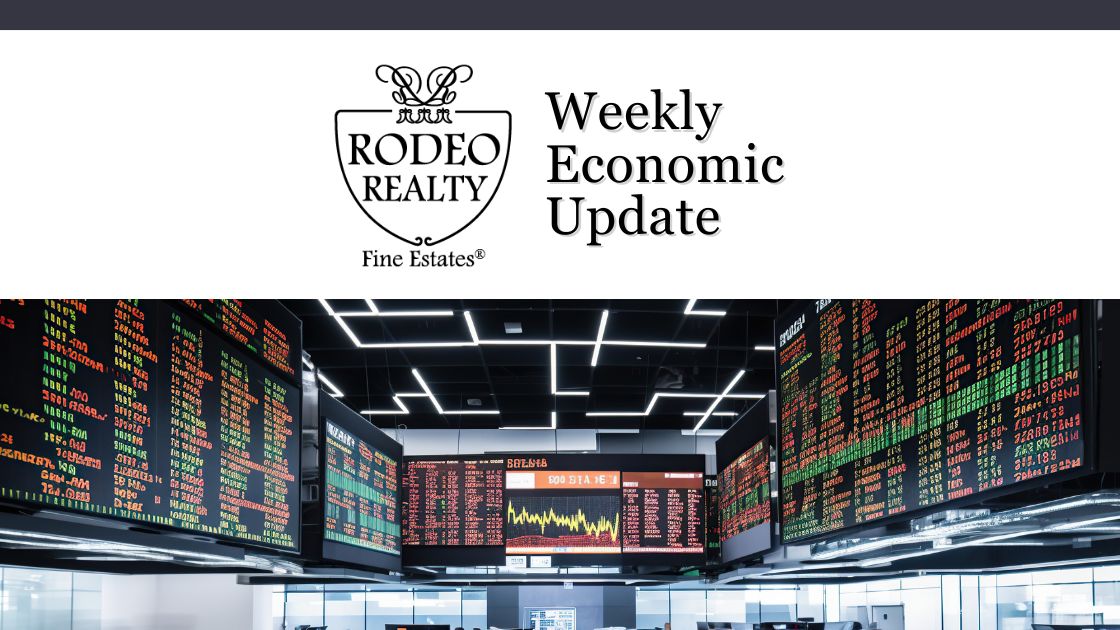| Economic news this week – It was a big week for economic news. On Tuesday, the Producer Price Index (PPI), a gauge of wholesale prices, was released. It showed that producer prices in July had increased 2.2% from one year ago. That was a sharp drop from a 2.7% year-over-year increase in June. Wholesale prices are often an indicator of the future of consumer prices as wholesale costs get passed on to consumers. On Wednesday, the Consumer Price Index (CPI) was released. Consumer prices in July were 2.9% higher than they were last July. That marked the lowest inflation rate since March 2021. Bond yields and mortgage rates dropped following these reports. On Thursday, new unemployment claims and the July retail sales report were released. New unemployment claims fell for the second straight week signaling that the labor market is better than expected and that the August unemployment rate may be lower than current expectations. That report comes out on the first Friday of September. Retail sales unexpectedly jumped in July. Because consumer spending fuels inflation we saw bond yields and mortgage rates end the week higher than they were after the inflation reports were released in the middle of the week. Stock markets now have recovered from their sell-off at the beginning of the month when it looked like unemployment was rising faster than expected and the economy was stalling.
The graph below shows the CPI rate from 2021 to now
Stock markets posted their best week since November 2023 – Strong retail sales data and lower first-time unemployment claims offset investors’ concerns about the economy. The Dow Jones Industrial Average closed the week at 40,659.79, up 2.9% from 39,497.54 last week. It is up 7.9% year-to-date. The S&P 500 closed the week at 5,554.25, up 3.9% from 5,344.15 last week. The S&P is up 16.5% year-to-date. The Nasdaq closed the week at 17,631.72, up 5.3% from 16,745.30 last week. It is up 17.5% year-to-date. U.S. Treasury bond yields dropped sharply this week – The 10-year treasury bond closed the week yielding 3.89%, down from 3.94% last week. The 30-year treasury bond yield ended the week at 4.15%, down from 4.23% last week. We watch bond yields because mortgage rates follow bond yields. Mortgage rates – Every Thursday Freddie Mac publishes interest rates based on a survey of mortgage lenders throughout the week. The Freddie Mac Primary Mortgage Survey reported that mortgage rates for the most popular loan products as of August 15th, 2024, were as follows: The 30-year fixed mortgage rate was 6.49%, up from 6.47% last week. The 15-year fixed was 5.66%, up from 5.63% last week. The graph below shows the trajectory of mortgage rates over the past year
Freddie Mac was chartered by Congress in 1970 to keep money flowing to mortgage lenders in support of homeownership and rental housing. Their mandate is to provide liquidity, stability, and affordability to the U.S. California home affordability – The California Association of Realtors released its second quarter affordability index this week. It showed that 14% of households could afford to purchase a $906,000 median-priced home, down from 17% in Q1 2024, and down from 16% in the 2nd quarter of 2023. Year-over-year the median price had jumped 9% from the second quarter of 2023. A household income of $236,800 was required to qualify for a monthly payment of $5,920, assuming a 20% down payment on a 30-year fixed at a 7.10% rate. They found that 22% of households were able to afford a $690,000 median price condo, down from 24% in Q1 and 25% one year ago. A household income of $180,000 was needed to qualify for a $4500 monthly payment. Fortunately, interest rates are significantly lower than they were in the second quarter and inventory levels have risen so affordable will be higher in the third quarter, but still near historic low levels. Have a great weekend! |
News & Media


